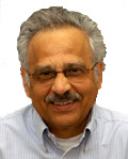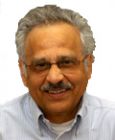Genetics
Who am I? Where am I From? My DNA Ancestral Analysis
Some Reflections on Our Common Ancestral Origins
Posted April 26, 2013
Born and raised in India, I have always considered myself of Asian Indian heritage. My answer to the oft-asked question “where are you originally from” has always been India. Motivated by watching Henry Louis Gates, Jr.'s series, I sent my cheek-swab samples to National Geographic to get a glimpse into my ancestors’ migration patterns. Receiving my DNA analysis on my ancestral migration patterns was an eye opener making my erstwhile readymade answer “I am from India” incorrect.
My DNA profile says I am 49% Southwest Asian, 22% Mediterranean, 12% Southeast Asian, 12% northern European, and 4% Northeast Asian; and, interestingly 2.7% of my genome is Neanderthal and 2.2% Denisovan. This profile fits most closely with people who live in Iran, but surely people with my profile are found in many parts of the word.
The analysis received from National Geographic reports “My maternal ancestors left Africa and settled around Southeastern Europe. They then expanded north into the rest of Europe. They survived by hunting and finding wild food sources. In Europe they met with those who were already there and formed new cultures that are reflected in the archeological record. Thus my cousins played an important role in the history of Europe.”
The analysis further reports “My paternal ancestors were part of an out-of-Africa migration that took them into the lands between Central Asia and South Asia. The first people to live in these lands were hunters of megafauna like the woolly mammoth. These lands came to be a crossroads for migrating peoples and merchants. Today, their culture reflects this diversity. ” I am sure my vegetarian father, a man of letters, would have appreciated learning of his hunting woolly mammoth heritage!
It is simply stunning that we all carry within us information about our ancestral migration patterns from over tens of thousands of years ago. Is this information our collective unconscious? Our ancestors went from place to place in search of greener pastures mixing with extant cultures, changing them and being changed in turn. Our DNAs have always and always will be on the move; the mixing is unstoppable. No doubt genomic similarity varies between groups, but the notion of cultural or ethnic purity appears to have little meaning.
Globalization is big news today, but globalization has been occurring from the very beginning of life not only by humans, but also by animals and plants. We admire Vasco De Gama, Christopher Columbus and other great explorers for discovering distant places, but in reality thousands of ordinary humans simply walked the earth to distant places before the advent of various modes of transportations to establish new cultures.
Despite the unprecedented globalization in the modern day, paradoxically, freedom of movement has become increasingly restricted especially since 9/11. Our world is defined by tightly controlled boundaries protected by visas, armed forces, and nuclear arsenals ready to be deployed at the shortest notice. The horrid violent acts that seem to erupt from nowhere make even our domestic travels anxiety ridden. Sometimes the machinations of Mike Myers’ Dr. Evil and Mini-Me appear real and not mere fantasy.
We often identify ourselves by such names as English, German, Indian, Irish, Asian, Hindu, Buddhist, or Christian. Our genomes, however, tell us that despite our national, cultural, and ethnic diversity, we are all connected by a common ancestral heritage. The famed 13th century Southwestern Asian Poet Rumi said it very insightfully:
Not Christian or Jew or Muslim, not Hindu, Buddhist, Sufi or Zen. Not any region or cultural system. I am not of the East, nor of the West. . . .
My place is placeless, a trace of the traceless.
Rumi
(From Shafak, 2010, p. 183)
Reference
Shafak, E. (20 888910). The forty of rules of love. England, U.K: Penguin Books


